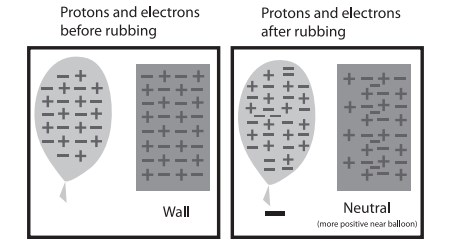Positive and negative charges are opposite and attract, but how does a neutral material react around something charged?
In this activity, students will observe the effects of charged objects on neutral materials.
The negatively charged balloon (from rubbing against hair) will repel the electrons of paper/water/aluminum cans away from the spot closest to the balloon, resulting in a positive charge on the paper/water/aluminum can. The negatively charged balloon then attracts the induced positive charge on the neutral material. The result is that the balloon can pick up the paper, deviate the stream of water, or attract the can.

